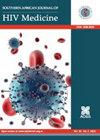开普敦社会经济地位低下的青少年对艾滋病毒治疗依从性的挑战
IF 1.6
4区 医学
Q4 INFECTIOUS DISEASES
引用次数: 31
摘要
背景尽管南非成功推出了抗逆转录病毒疗法(ART),艾滋病毒发病率急剧下降,但青少年(10-19岁)的情况并非如此。与成人和儿童相比,接受艾滋病毒治疗的青少年的病毒载量抑制率和依从性较低。目的本文报道了在开普敦社会经济水平较低的城市环境中,在初级卫生保健诊所接受抗逆转录病毒疗法的青少年所面临的依从性挑战。方法采用探索性定性设计,通过与在开普敦社会经济水平较低的城市环境中的初级卫生保健诊所接受抗逆转录病毒疗法的青少年(n=15)进行四次焦点小组讨论来收集数据,并对每个焦点小组的两名青少年进行八次个人半结构化访谈。对诊所的卫生工作者进行了两次关键线人访谈。音频数据经过数字记录并逐字转录。使用内容分析对数据进行分析。结果据报道,学校承诺、紧张的师生关系、负面的家庭动态和非生物照顾者的虐待是坚持的主要障碍。此外,糟糕的服务交付、文件丢失或放错地方以及漫长的等待时间也受到了严重批评。对艾滋病毒状况意外披露的恐惧、污名和歧视、治疗疲劳以及无组织的生活对依从性产生了负面影响。有一个强大的社会支持系统,有人生目标和抱负是保持坚持的动力。结论本研究强调了在兼顾学校、家庭生活和个人生活目标和愿望的情况下坚持ART的复杂性。除了简化学校和诊所之间的服务提供外,改善依从性的干预措施还应解决心理社会因素,如治疗疲劳、披露信息以及家庭和家庭动态。本文章由计算机程序翻译,如有差异,请以英文原文为准。
Challenges to HIV treatment adherence amongst adolescents in a low socio-economic setting in Cape Town
Background Despite the successful rollout of anti-retroviral therapy (ART) and steep declines in HIV incidence in South Africa, this has not been the case for adolescents (10–19 years). Adolescents on HIV treatment have lower rates of viral load suppression and adherence compared to adults and children. Objectives This article reports on the adherence challenges faced by adolescents receiving ART in a primary health care clinic in a low socio-economic urban setting in Cape Town. Method An exploratory qualitative design was employed where data were collected through four focus group discussions with adolescents (n = 15) who received ART at a primary health care clinic in a low socio-economic urban setting in Cape Town and followed up with eight individual, semi-structured interviews with two adolescents from each focus group. Two key informant interviews were conducted with health workers at the clinic. Audio data were digitally recorded and transcribed verbatim. Data were analysed using content analysis. Results School commitments, strained teacher–learner relationships, negative household dynamics and ill treatment by non-biological caregivers were reported as major barriers to adherence. In addition, poor service delivery, missing or misplaced files and long waiting times came under major criticism. Fear of unintended disclosure of HIV status, stigma and discrimination, treatment fatigue and having unstructured lives negatively influenced adherence. Having a strong social support system and having life goals and ambitions were motivators to remain adherent. Conclusion This study highlighted the complexity of ART adherence in the midst of juggling school, home life and personal life goals and aspirations. Interventions to improve adherence should address psychosocial factors such as treatment fatigue, disclosure and family and household dynamics, in addition to streamlining service delivery between the school and clinic.
求助全文
通过发布文献求助,成功后即可免费获取论文全文。
去求助
来源期刊
CiteScore
2.80
自引率
11.80%
发文量
41
审稿时长
>12 weeks
期刊介绍:
The Southern African Journal of HIV Medicine is focused on HIV/AIDS treatment, prevention and related topics relevant to clinical and public health practice. The purpose of the journal is to disseminate original research results and to support high-level learning related to HIV Medicine. It publishes original research articles, editorials, case reports/case series, reviews of state-of-the-art clinical practice, and correspondence.

 求助内容:
求助内容: 应助结果提醒方式:
应助结果提醒方式:


